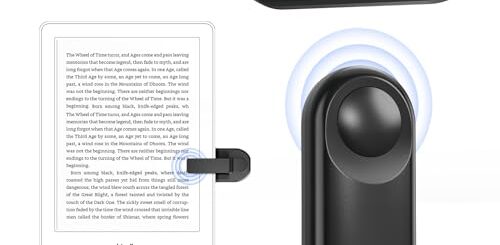Electronic Books and Tablets – Tech for Toddlers
“I don’t necessarily agree with providing technology to preschool children, but I do see the value in working with technology alongside your child,” said Cynthia Leclerc, my work colleague and grandmother of a two-year-old. Her words echoed in my mind as I realized that many millennial parents who grew up playing video games don’t allow their children to use technology. They finally seem to understand the value of being disconnected from electronic devices.
As a former educator, my viewpoint lies somewhere in between. I do not think technology should be used as a babysitter but it is all around us, and small children are naturally curious. Their curiosity will only increase as they grow older. Humans always want what they cannot have. We cannot keep technology away from kids forever, but we can introduce it to them one step at a time.
Artificial intelligence is expanding across all digital platforms, and children must learn to adapt to it. The earlier a child adapts, the better chance they have of success.
- When and how should parents introduce technology to preschoolers without damaging their natural abilities?
- How long should preschoolers use technology?
- What is the potential impact of technology on preschoolers’ development?
Even though there have been countless studies on children and the effects of technology, we must rely on our judgment as parents and educators because we do not have the answers. The data is all over the map.
Too much of anything is not good. This is the best rule to follow.
Take, for example, my granddaughter. Her parents take a very active role in her life and only allow her to watch one animated cartoon before bedtime as a way to settle down for the night. Like most children her age, she tries to push the boundaries and always asks to watch another episode. She does not have access to any other form of technology. That has not diminished her curiosity. She loves having her picture taken and viewing it on a cell phone while making every attempt to push the buttons. This “tiny peek” into the digital world seems to appease her.
Designed for preschoolers, interactive storybooks, audible e-readers, interactive games, and tablets combine technology with colourful themes to capture a child’s imagination. They are the best alternative for introducing your child to technology. Start with books and introduce new devices as your child grows.
STEP ONE: INTERACTIVE STORYBOARDS
Interactive books help your child sound out words, letters and images to improve and expand their vocabulary. They are the perfect introduction to the digital world with colourful buttons to push that make sounds, play music or flash. They also help to improve fine motor skills and foster an interest in reading.
STEP TWO: ELECTRONIC LEARNING GAMES AND STEM TOYS
Learning games expand on the process by encouraging children to interact with the world around them. Interactive globes, robotic stuffed animals, and electronic computer desks are the toys that rule in this domain. These toys help improve a child’s imagination and creativity through interactive play. Play is the starting block for human socialization and self-awareness.
Leapfrog and V-Tech toys are leaders in STEM activities. They get top honours for ingenuity, durability and longevity.
Leapfrog focuses mainly on toys and applications in the digital sphere with digital expansion packs that grow with the child. V-tech toys combine ordinary items with interactive components such as cash registers with digital credit cards.
STEP THREE: TABLETS FOR KIDS
There are indeed tablets for toddlers that come in the form of e-readers, laptops, smartphones and tablets. Children can watch videos, read and play games on the device like a real tablet. They are pre-programmed with applications and games to keep the child safe.
Introducing your child to technology is great. Interacting with your child using technology is priceless.
Writing has always been her passion and a voice for those who cannot speak. She considers herself fortunate to write every day and says her mantra is, “I drink coffee, write, and I know about people and technology.” Her writing is diverse and can be found online on websites like LifeHack, You Have a Calling, Medium, TechCrunch and, She Knows.





